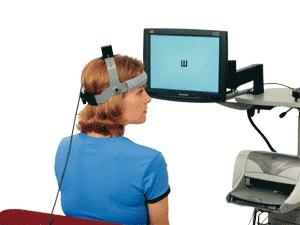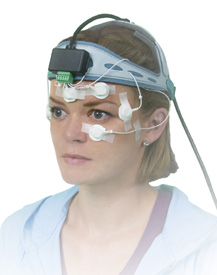Categories
Vestibular testing equipment

Vestibular testing comprises of various tests that figure out whether there is some kind of problem with the vestibular (adjust) segment of the inward ear. These tests can segregate tipsiness manifestations to a particular cause that can regularly be dealt with.
Vestibular testing hardware is made out of a few parts, including videonystagmogram (VNG), revolving seat and vestibular evoked myogenic potential (VEMP). It is vital to know whether you are getting a total or halfway examination. For instance, a rotational seat gives superb data with respect to your vestibular framework and is the main bit of gear equipped for making certain determinations. Because of the high cost of buying a revolving seat, most by far of vestibular testing offices don’t have this critical bit of symptomatic hardware.
Moreover, the vestibular evoked myogenic potential (VEMP) is the main strategy we as of now need to break down the capacity of the mediocre bit of the vestibular nerve. There are two sections of the vestibular nerve, the top (unrivaled) partition and the lower (substandard) parcel. The VNG and rotating seat just dissect the capacity of the unrivaled part of the vestibular nerve. There are additionally particular vestibular sickness states effectively distinguished by the VEMP, which would dodge recognition by only a VNG.
Contents
Why Get Vestibular Tests?
In the event that discombobulating is not created by the internal ear, it may be brought about by the mind, by medicinal issue, for example, low circulatory strain, or by mental issues, for example, uneasiness. Late reviews have recorded that vestibular tests are more precise than clinical examination in distinguishing inward ear issue (Gordon et al, 1996). Listening to pathway tests (audiometric, sound-related brainstem reaction, electrocorticography) can likewise be utilized for a similar reason, and are much of the time consolidated with vestibular tests.
Vestibular tests can figure out whether more costly tests, for example, attractive reverberation imaging (MRI), are required. Ponders (Levy and Arts, 1996) have demonstrated that vestibular testing is considerably more exact than clinical side effects in foreseeing whether neuro imaging tests will be anomalous . [See likewise Korres et al. (2009) for an examination of caloric and MRI testing]. Vestibular tests can likewise report equitably vestibular conditions, for example, kind paroxysmal positional vertigo (BPPV), and perilymph fistula, which usually happen after head damage; and two-sided vestibular ototoxicity, which ordinarily is a symptom of solution.
The accompanying vestibular tests are depicted:
- electronystagmography (ENG)
- electrocochleography (ECOG)
- rotational seat test
- posturography
- fistula test
- new and developing tests
Electronystagmography (ENG) Test

The ENG test is utilized to figure out if or not dazedness might be because of internal ear malady. It comprises of painstakingly measuring automatic eye development (nystagmus) while the subject’s adjust framework is invigorated in various ways. There are four primary parts to the ENG: the adjustment test, the following test, the positional test, and the caloric test.
The alignment test assesses quick eye developments. The following test assesses development of the eyes as they take after visual target. The positional test measures discombobulating connected with places of the head. The caloric test measures reactions to warm and cool water flowed through a little, delicate tube in the ear trench.
The present best technique to gauge eye developments is an infrared/video framework. Different strategies incorporate electrooculography (EOG), and infrared reflectance. Video frameworks are normally more precise than the more established EOG technique since they are less delicate to cover curio and are not influenced by electrical clamor produced by muscle. Infrared reflectance is minimal utilized as a part of late circumstances in light of nonlinearity.
The ENG test is the “best quality level” for determination of ear issue influencing one ear at once. For instance, the ENG is astounding for conclusion of acoustic neuroma and also vestibular neuritis. The ENG is likewise helpful in analysis of BPPV and respective vestibular misfortune, in spite of the fact that the rotational seat test is better at the determination of two-sided vestibular clutters than is the ENG. The alignment and following tests are expected to analyze focal sensory system issue. These tests are for the most part unfeeling contrasted with an examination by a neurologist or an attractive reverberation imaging (MRI) filter. ENG, in any case, is a great deal less costly than a MRI in many establishments.
Electrocochleography (ECOG)
ECOG is a variation of brainstem sound evoked reaction (BAER). It is not a vestibular test at everything except rather a trial of hearing. It is proposed to analyze Meniere’s ailment, and, specifically, hydrops. In this test, a recording terminal (gold wipe) is embedded into the subject’s ear trench, a wire or spring is set on the ear waterway, or a needle that transfixes the ear drum is embedded into the ear. The subject gets a progression of capable of being heard snaps.
The goal is to record wave-1 (there are 5 waves), with more prominent exactness and to recognize the summating potential, which is a shoulder on wave 1. Needle sort ECOGs have dropped out of support since they are for the most part judged to be irrationally obtrusive.
Commotion can be a noteworthy issue with ECOG. On account of this, it is not a simple test to perform. For the most part, the outcomes are accounted for as a proportion of the summating potential to the activity potential (the SP/AP proportion), for which for the most part a proportion of 0.5 or more prominent is viewed as anomalous. It is vital when translating ECOG to consider the clamor level, which is by and large surveyed by acquiring numerous trials. On the off chance that they are all comparative, then the standard blunder is little and the outcome is probably going to be right. In the event that they fluctuate broadly, the dependability of the normal SP/AP proportion might be sketchy. Subjects with poor high-recurrence hearing are probably going to have higher commotion levels, and along these lines the point of confinement of typical for their ECOG ought to be set higher.
Bet and others (1999) detailed that salt-stacked ECOG might be helpful in subjects who have ordinary ECOGs however a history suggestive of Meniere’s illness. Correspondingly it has been proposed that ECOG might be helpful in identifying unfavorably susceptible Meniere’s illness. ECOG is performed prior and then afterward challenge with an allergen (Noell et al, 2001).
VNG or Video Nystagmography:

Video Nystagmography is the very widely recognized test battery generally administrated to victims with dazedness and additionally adjusts scatters. VNG is the battery of checks that registers measureable estimations of nystagmus, also gives target records of vestibular capacity, the vestibular visual reflex, and focal vestibular pathologies.
Video Nystagmography testing is viewed as the latest grade for testing inward ear works over ENG or Electronystagmography, in light of the fact that VENG determines the developments of the eyeballs straightforwardly via infrared cameras, rather than a determining a mastoid muscle across the eyes by anodes like the past ENG variant. VENG testing or checking is extra precise, more reliable, and more agreeable for the victim or patient.
Video Nystagmography System is Skillful of Such Diagnostic Researches
Oculo motor Testing:
Oculo motor tests searches for sores particular to fringe or vestibular capacity.
Dynamic Head Spin Testing:
Surveys capacity of a vestibular visual reflex or VOR; assesses look dependability on settled focus with either vertical head or flat movement advancing from ease back to quick speed.
Positional Testing:
Body roll, head roll, plus hallpike; recognizes BPPV sort and particular waterway to decide remedy type of CRM or Canalith Repositioning Maneuver; can likewise distinguish focal positional vertigo.
DVA or Dynamic Visual Acuity:
The dynamic visual acuity or DVA is a disability test that measures the effect of VOR framework pathology on the patient’s capacity to keep up visual sharpness while moving.
Caloric Testing:
Evaluates singular capacity of a Labyrinths Every year is flooded with both cool and warm air. The adjustments noticeable all around temperature animate the internal ear plus check the nystagmus reaction created by the incitement.
EP Structure is Skillful of Such Diagnostic Researches
Sound-related Evoked Potentials (AEP):
AEP test registers the electrical action from the sound-related nerve fiber on up to a brainstem. This is particularly helpful for identifying conditions, for example, vestibular neuritis and acoustic neuroma.
OAE or Oto acoustic Emission
This EP checks evaluates the acoustic flag created via shares of the ear moreover is generally utilized for newborn children and youthful grown-ups to perceive how their inward ear and listening to framework is creating.
ECoG or Electro cochleography
This test determines the electrical possibilities created in the internal ear because of incitement by sound. Since quite a while ago used during testing for Meniere’s sickness.
VEMP or Vestibular Evoked Myogenic Potentials
This is another analytic test which is picking up prevalence for the recognizable proof of Otology Pathologies, for example, Meniere’s Disease, Vestibular Neuritis, Neurolabyrinthitis, Neurologic Pathologies, and SSCD or Superior Canal Dehiscence Syndrome, for example, Brainstem Stroke, MS, Spinocerebellar Degeneration, and Migraine. The reason for this check is to figure out whether the saccule (a bed of sensory cells situated in the inner ear), and the mediocre vestibular nerve bit of the Vestibulocochlear nerve are in place and working typically.
Analysis:
The framework delivers exceptionally exact test outcomes; however, you can change to manual alter mode in all tests to overrule the programmed investigation. In manual alter mode you can include or erase nystagmus marks, change slants and characterize elective territories of investigation.
FINAL WORDS:
At long last, Vestibular capacity testing is surely the best technique by which to assess a fundamental wellspring of unsteadiness or vertigo. This likewise mulls over the viability, as well as the cost of any meds which may be endorsed. It is conceivable to test the whole vestibular nerve utilizing galvanic incitement. This is an old system in which an electrical current is passed into the ear, and eye developments or postural influence are recorded. This innovation is directly not business and constrained in light of the fact that is hard to pass enough current into the ear without bringing on agony. By and by, it might increment being used once vestibular prosthesis get to be distinctly accessible to substitute for the vestibular arrangement of people who have had serious respective vestibular misfortune.
Some of the important parts of a careful demonstrative assessment is an entire audiometric (hearing) appraisal. Some dazedness and adjust issue create listening to issues subsequently of the disorder. It is vital to take a far reaching listening to evaluation as a feature of the indicative procedure to all the more precisely analyze and separate the wellspring of the issue. The greater part of our listening to tests are accomplished in sound corners to guarantee the most exact outcomes as could be expected under the circumstances.
The goal of any listening to test or check is to quantify the limit for discourse and tones. Amid a listening to test, the Audiologist will put forth headphones in every ear as well as a headband surrounding your temple to hold the bone director set up. The froth headphones convey sound over the air and a bone conductor conveys sound through little bone vibrations. Victims regularly don’t sense the trembling of a bone conductor amid the test.
Amid all testing, patient will be told to react every time you listen to a delicate tone exhibited in any ear. An Audiologist will quantify the edge for pitches over a scope of frequencies. Regularly, the range would be 250 – 8000 Hz, since this incorporates the recurrence run important to comprehend discourse and basic sounds and commotions.
The audiogram is delivered via the testing hardware, which would be a realistic picture of audiometric information. An audiogram is extremely valuable since it gives an advantageous approach to picture a patients listening to capacity on the scale identified with the “typical” scope of hearing. An additional important segment of the listening to evaluation, is discourse trying.
At the American Hearing Research Foundation (AHRF), we have a subsidized fundamental research on vestibular testing previously, and are exceptionally keen on financing extra research on vestibular testing later on. Take in more about giving to American Hearing Research Foundation (AHRF).



